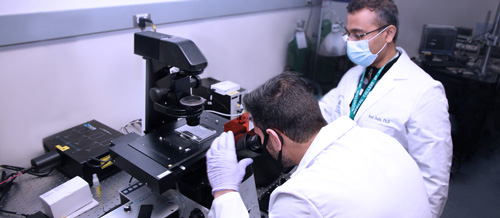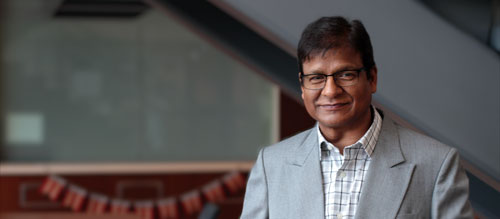Research Tracks
 The Cutting Edge of Innovation
The Cutting Edge of Innovation
Research at the Marquette University and Medical College of Wisconsin Joint Department of Biomedical Engineering is on the cutting edge of innovation, and students are invited to enjoy a range of educational opportunities in any of our many ongoing projects. Found at the intersection of our six distinct research themes and thirteen featured clinical applications, research tracks are provided to help students drive their academic experience, helping to ensure that they are well prepared to pursue their preferred line of interest upon graduation.
Search Ongoing Research
Filter by research themes
Filter by clinical application
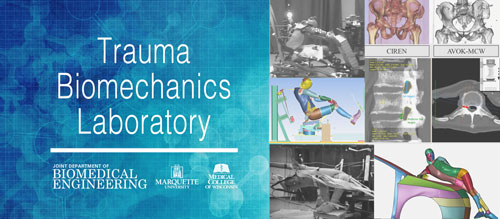
Crash Testing Human Injury ToleranceThe Trauma Biomechanics Lab utilizes state-of-the-art facilities to investigate human injury tolerance to impact in automotive, aviation, aeronautic, sport and military environments |

Regenerative Biomaterials for Medical Device DesignThe Regenerative Engineered Biomaterials Lab studies how regenerative biomaterials interact with human tissue, creating engineering solutions to mitigate the interactions and optimize devices made of polymers, bioabsorbable metals, and cell derived materials. Learn more about Regenerative Biomaterials for Medical Device Design |
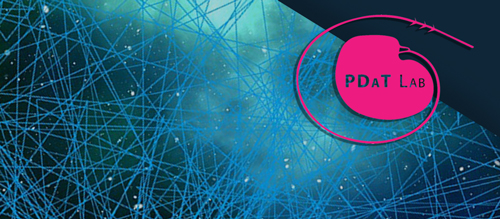
Device Design for Urinary NeurorehabilitationThe Pelvic Diagnostics & Therapeutics Lab seeks to help those impacted by urinary, sexual, and bowel dysfunction, with a special focus on addressing women’s health issues. Learn more about Device Design for Urinary Neurorehabilitation |
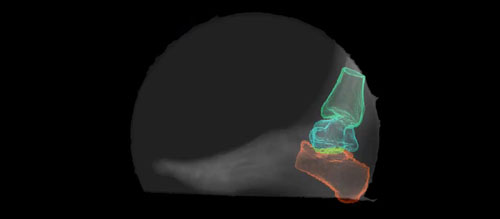
Bioengineering for Pediatric OrthopaedicsThe Motion Analysis Center at Shriners uses advanced orthopaedic technologies to assess gait, balance, and upper extremity motion in children, with a goal of diagnosing orthopaedic abnormalities and providing advanced therapeutic options for the same. |

Sensorimotor Function for NeurorehabilitationThe Integrative Neural Systems Lab employs a multi-scale approach to analyses of sensorimotor function, neurorehabilitation strategies for sensorimotor impairment, and interfacing human visuomotor control with external devices. Learn more about Sensorimotor Function for Neurorehabilitation |
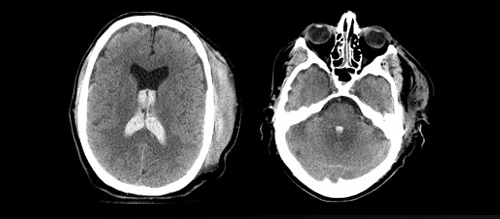
Engineering for Crash Injury ResearchThe Wisconsin Crash Injury Research Engineering Network Center reconstructs vehicular crash case histories to help identify and elucidate mechanisms of traumatic injury to human occupants. |
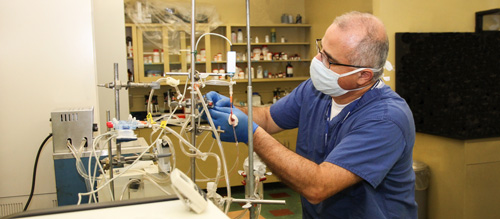
Modeling Pulmonary FunctionThe Computational Lung Physiology Laboratory investigates lung function at all levels—molecular, cellular, tissue and whole organ. Captured data are used to generate computational models of lung function in health, injury and disease. |
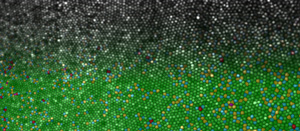
Imaging Ocular FunctionThe Ocular and Computer Vision Laboratory uses non-invasive imaging technologies to assess the structure & function of individual cells in living eyes, an essential step in assessing the function of retinal cells following therapeutic interventions such as gene therapies and stem cell transplants. |
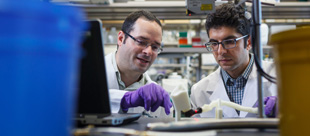
Respiratory Device DesignThe Airway Biomechanics Laboratory investigates transport processes in the respiratory tract to better understand respiratory physiology and develop innovative technologies to improve the diagnosis and treatment of respiratory diseases. |

Imaging Attention and PerceptionThe Sensory, Neuroscience, Attention and Perception Lab uses imaging techniques and concepts of neuroscience to investigate attention, object perception and perceptual organization to investigate human behavior in response to visual and auditory stimuli. |

Motion Analysis for Orthopaedic RehabilitationOREC's Motion Analysis Laboratories use the principles of biomechanics to develop new approaches to human motion analysis, human motion analysis in clubfoot and cerebral palsy, pediatric risk assessment, and biomaterial properties of pediatric bone. Learn more about Motion Analysis for Orthopaedic Rehabilitation |
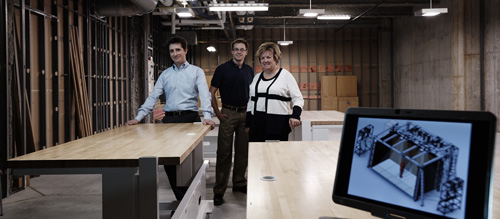
Modeling Cardiovascular DiseaseThe Laboratory for Translational, Experimental and Computational Cardiovascular Research investigates cardiovascular disease from the perspective of hemodynamics, vascular biomechanics and cellular mechanisms. |
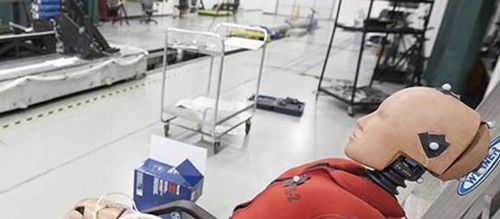
Biomechanics of Human InjuryThe Zablocki VA Medical Center Laboratories use computational modeling and anthropomorphic test devices to investigate human tolerance to injury in automotive, aviation, military and sports environments. |

Neuroscience for Neuromuscular ControlThe NeuroMotor Control Laboratory investigates integration of sensory input in task performance and motor control, particularly in the case of stroke, concussion and neurodevelopmental disorders. |
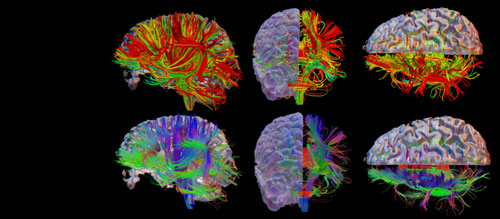
Imaging for NeurorehabilitationThe Integrative Neural Engineering and Rehabilitation Laboratory uses advanced imaging technologies to investigates biomedical solutions at opportunities at the cross-section of biomechanics, neural and rehabilitation engineering. |
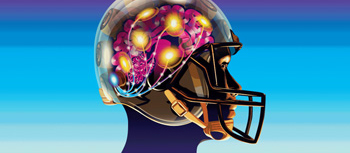
Biomechanics of Head & Neck TraumaThe Preclinical TBI and Rodent Behavioral Testing Laboratory studies impact- and rotationally derived closed-head injuries in its work to quantify trauma biomechanics to the hard and soft tissues of the head and cervical spine. |
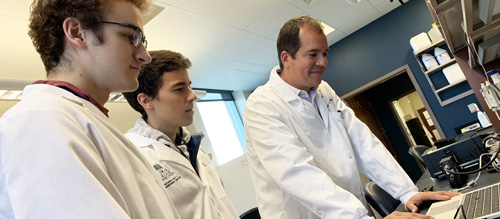
Tissue Engineering for Cardiovascular StructuresThe Cardiovascular Regenerative Engineering Laboratory develops living tissue replacements for cardiovascular structures with a focus on developing next-generation treatments for cardiovascular diseases. Learn more about Tissue Engineering for Cardiovascular Structures |
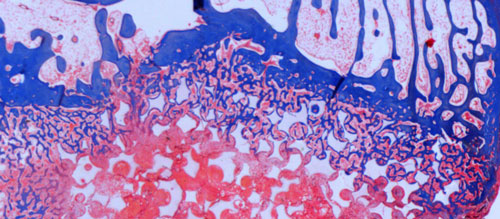
Tissue Engineering for Dentistry & OrthopaedicsOREC's Biomaterials & Histology Laboratory develops and evaluates biomaterials for use in orthopedics and dentistry. Ongoing projects include the evaluation of bone void fillers, bone graft substitutes and orthopaedic devices. Learn more about Tissue Engineering for Dentistry & Orthopaedics |

Tissue Engineering for Regenerative MedicineThe Tissue Regenerative Engineering Laboratory develops bio-functional engineered tissues in order to provide advanced therapeutic options for such conditions as birth defects, bone disorders, liver and vascular diseases. Learn more about Tissue Engineering for Regenerative Medicine |
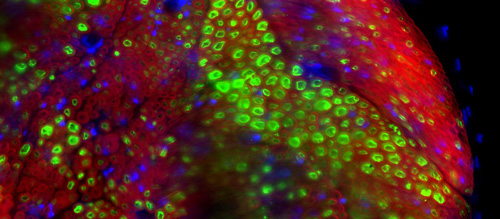
Neural Engineering for Motor DeficitsThe Neural Engineering & Modulation Laboratory uses neurophysiology, optogenetics, viral gene therapy, and optical imaging techniques to develop neuroprosthetic and gene therapy approaches to alleviate motor deficits. |

Biophotonics for Imaging & Device DesignThe Biophotonics Laboratory harnesses the science of light to develop novel technologies and imaging methodologies for use in cancer detection and monitoring, as well as pediatric endotracheal tube placement. |

